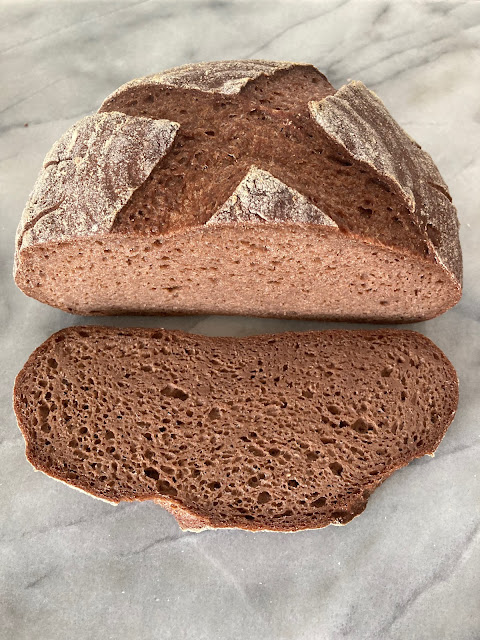Sourdough Starter Ready to use in 3-7 Days
I first came across this method in a post on The Fresh Loaf by the contributor Ars Pistorica, AKA Ian Lowe. I’ve been using this method ever since I first read about it in 2013. He used whole wheat and/or rye, but says the method can be used with "any cereal, pseudo-cereal, or tuber flours." It’s not the only way to accelerate the first stages of creating a starter, but this is how I’ve adapted this method to various gluten-free grains.
Use whole grain, freshly milled flour if possible. The method can be used for almost any kind of flour, including roots like potato or cassava flour (though I haven't tested this). Teff is the absolute best, but it’s expensive so I usually use sorghum. I tried millet for the first time this time around and it turned out amazing to my surprise.
You need some way to keep the culture at a consistent temperature for 24 hours at a time. I use a seedling heat mat, but a yogurt machine or a large insulated jug or cooler filled with water at the correct temperature also works.
(If you do not have a heat source, try this teff sourdough starter method that does not require special equipment: https://glutenfreegourmand.blogspot.com/2023/03/teff-sourdough-starter-recipe-ready-in.html )
Step 1
50g whole-grain flour of choice
100g spring water
Temp:
40°C/104°f
Lay these directly on the seedling mat - OR - immerse in warm water. Keep the bag heated to a constant temperature of 40°C/104°f for 24 hours.
The culture may smell anywhere from mildly funky to really, really bad. This is normal.
Add to the bag and mix in as best you can:
50g flour
Temp:
35°c/95°f
If it’s so thick it’s hard to mix, you can add about 80g spring water. I usually do this for sorghum starters.
Lay the bag on a cooling rack over the seedling mat - OR - immerse in warm water and keep heated at a constant temperature of 35°c/95°f for 24 hours.
Step 3:
Mix the contents of the bag thoroughly before extracting some for your culture. In a clean, sanitized glass jar, mix:
10g culture from step 2
50g flour
40-60g spring water
Temp:
30°c/86°f
Keep at a consistent temperature of 30°c/86°f for 24 hours. Placing the jar on a cooling rack over the seedling mat is usually about right for this step. Or, you can set the jar in tepid water or find a very warm spot in your house to keep it.
My recommendations based on experience is:
40g water for: millet (or 80% hydration)
60g water for: sorghum (or 120% hydration)
50g water for: most other flours or if you don’t know you can start with this and see how it goes. The mixture should have the consistency of a pancake batter. Teff is the most versatile and can be used as a stiff starter or a very liquid starter.
Do not use the rest of the discard - just dispose of it. You may use the discard from step 4 onward if it smells good.
5g starter from previous day’s mix
50g flour
40-60g spring water
Temp: Room temp or up to 27°c/81°f
Feed the starter by mixing in a new jar every 24 hours. You may now keep the starter at room temp if you like. You may have to adjust feeding amount based on your climate and schedule. This schedule is feeding every 24 hours at 1:10:10 (starter:flour:water), but if you like feeding 1:1:1 every 12 hours you may convert it to that schedule. Don't feed less than 1:1:1 or more than 1:20:20. Starter should not peak until after 12 hours. If it is peaking sooner, reduce the amount of starter you use to inoculate.








Comments
I use to do this with my whole wheat starter to cut down on waste/discard: I'd keep just 1/4 cup of starter each time I made sourdough, put it in the fridge, then pulled it out and fed it 7-10 days later (I even went 3 weeks once, and it was totally fine!). After 12 hours, I'd feed it again, and 12 hours later, it was all nice and bubbly and ready to bake with. I'd use all but 1/4 cup, which I put back in the fridge until the next week. I'd love to know if the same method might work for other grains, because I just hate to waste food that I spend so much money on! :D